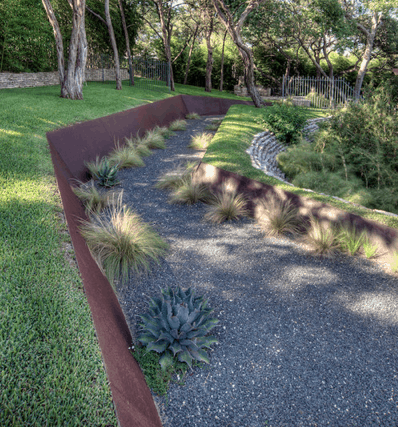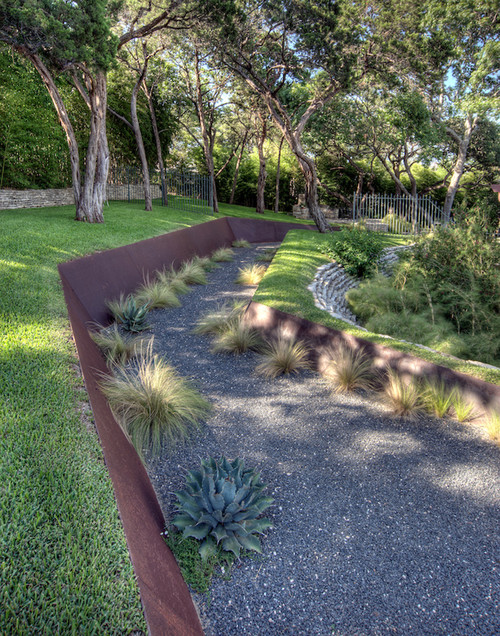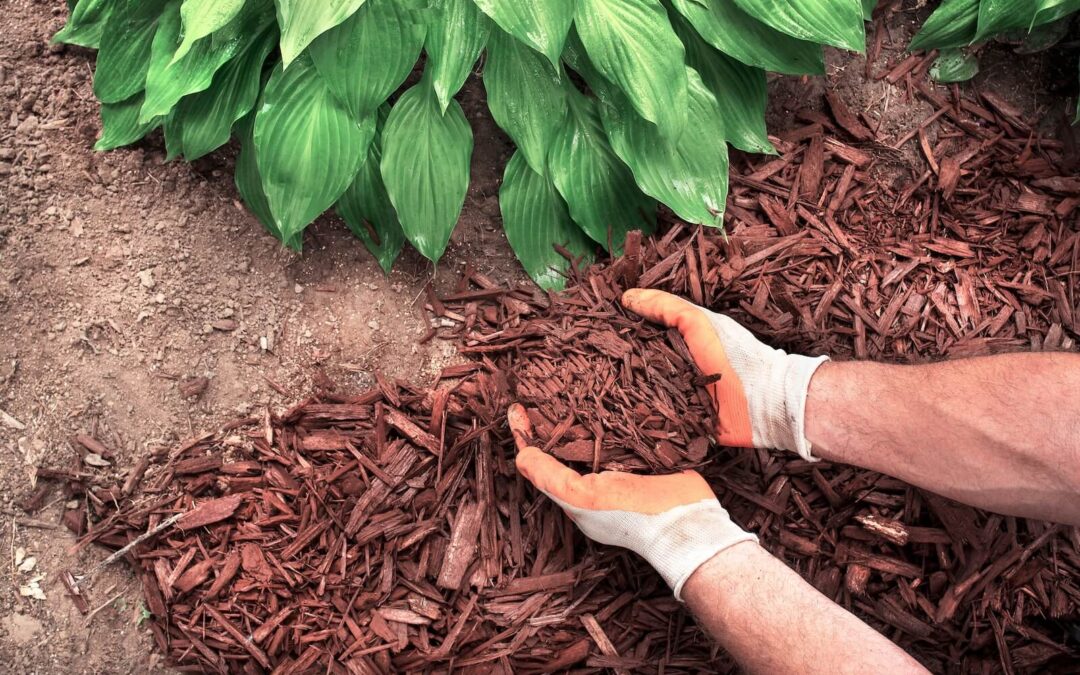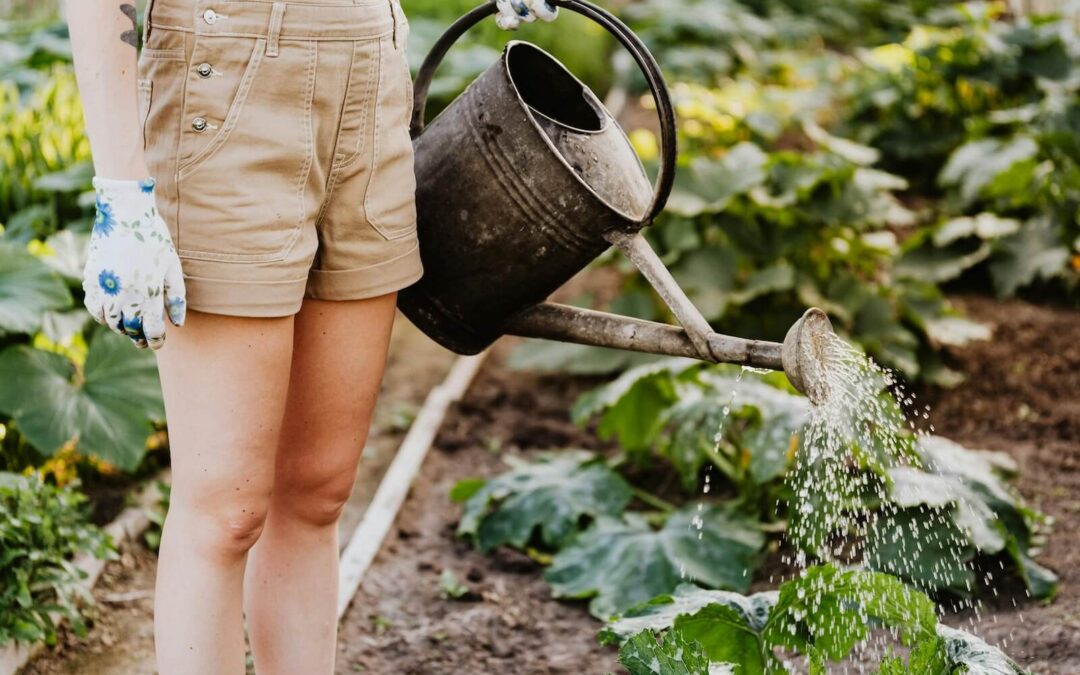Edging prevents soil and mulch runoff while keeping plants firmly in place, but its benefits can go beyond function. Edging can add form, texture, color and definition to achieve beautiful landscape spaces.
Trench edging is a simple yet effective method for creating subtle definition. Instead of integrating physical edging, a simple trench-like formation is created between the flower or plant areas and neighboring grass or groundcover. This is a wonderful method for achieving very organic and natural looking landscape designs.
Durable yet thin edging made from steel or plastic can also be subtle, when it is sunk low into the earth lining pathways or flowerbeds. But to add more interest, steel or plastic in attractive or bold colors can be used to add a splash of color.
Decorative edging that is more visible can become can essential part of the landscape design. Concrete or steel edging, for example, can be custom designed with colors, forms and shapes that will complement and elevate the style of the landscape. Likewise, cut stone or carved wood can add natural beauty or rustic charm.
Brick also lends itself to interesting decorative edging. The color of brick, as well as the pattern and angle in which it can be laid, adds fantastic aesthetic appeal. The height of brick edging can easily be adjusted by adding layers. Raised edging not only prevents erosion and adds to the look of landscapes but also deters pets or other animals from wandering into plant beds.
Colored gravel or slate chippings can also be used to design decorative landscape edging that defines plant beds, keep weeds down and provides a barrier against soil erosion.
When you want to enhance your landscape with elegant landscape edging, let designer and architects at Lifescape Colorado help. Here at Lifescape Colorado, we offer a full slate of landscaping services, including hardscaping and gardening design and maintenance.







